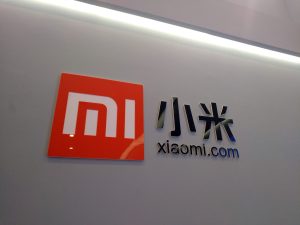Hugh Harsono

In October 2022, Xiaomi, the Chinese designer and manufacturer of many consumer electronic devices, solidified its status as the world’s third-largest smartphone vendor behind leaders Apple and Samsung. Xiaomi’s reputation as an affordable smartphone provider, combined with its entire ecosystem of products, services, and software, has helped to fill a relatively large gap in providing economical access to digital services in many developing countries, to include India.
In spite of this success, in late October 2022, Xiaomi pulled its MiPay and MiCredit apps from the Indian market. This move is particularly curious given Xiaomi’s status as India’s top smartphone vendor, despite the sector’s decline in late 2022. The removal of these ancillary business services supported by Xiaomi highlights the increasing desire for governments like India to control data and information more effectively domestically, in contrast to relying on externally sourced technologies prone to state-actor influence.
Xiaomi publicly stated in January 2021 that its products are not “owned, controlled, or affiliated with the Chinese military,” in response to having been designated as a “Communist Chinese military company” by the United States at the time. Though this designation was lifted a few months later in May 2021, there is no doubt that Xiaomi’s independent status could be co-opted by the Chinese government at any given time. This is primarily due to legal mechanisms that could be utilized to force cooperation with Chinese authorities, such as China’s National Intelligence Law and the National Security Law.
Xiaomi’s recent reduction of services in India showcases increasing awareness of the potential of these mechanisms to enable the Chinese government’s access to sovereign individual and national-level data. India’s actions highlight a decrease in the tolerance that was typically afforded to companies due to the improvements that Chinese technological infrastructure can bring to citizens at a low cost.
Xiaomi’s presence in India had previously encompassed most of its product offerings, with MiPay and MiCredit helping to extend the Xiaomi footprint within India. MiPay allowed users to make transactions on India’s unified payments interface (UPI) payments network, while MiCredit acted as a platform for personal loans at low interest rates.
MiPay, which was previously listed at number 15 on the UPI’s approved third-party application page, leveraged its tie-in to UPI to compete with apps like India’s BharatPe and PayTM, as well as internationally-developed systems like Google Pay. While BharatPe, PayTM, and Google Pay dominate India’s UPI payments ecosystem, MiPay, whose 2019 debut marked Xiaomi’s first international release of a financial service, appeared to be positioned to gain significant market share. A January 2021 ruling capped the market share of each app to 30 percent of the total market; MiPay’s seamless integration via Xiaomi phones was expected to help it to gain users in light of upcoming enforcement of this ruling in January 2023.
MiCredit determined the credit worthiness of users by phone activity data, scanning these records for transaction information and other details. This information would then be passed on to local partners like startup KreditBee to provide loans quickly to users.
India’s focus on protecting its consumers has affected Chinese companies like Xiaomi in the past, leaving questions about the growth potential of international companies within India in the future. This is particularly concerning for many users given Xiaomi’s affordability and large ecosystem.
In early October 2022, India’s federal financial crime fighting agency, the Enforcement Directorate, seized funds from Xiaomi India due to “illegal remittances” made to foreign entities. This followed an announcement one year before, in October 2021, where the Indian government sent notices to Chinese-based smartphone manufacturers like Xiaomi, Oppo, and Vivo demanding information on data and components used in their respective smartphones. Additionally, in June 2020, India banned 59 Chinese apps, including Xiaomi’s MiCommunity and MiBrowser app, a social forum and web browser developed by Xiaomi.
India’s strict regulatory crackdown on Chinese firms, to include Xiaomi, highlights the lengths that India is going to ensure stronger domestic digital infrastructure protections for its population. The crackdown on Xiaomi-specific applications leads to further questions about the potential reach of Chinese government state actors within the digital domain.
India’s actions seem particularly intent on protecting its population’s data from foreign access and influence. The removal of apps like MiPay and MiCredit, which provide unparalleled access and placement into critical data networks like UPI and into user’s individual devices, support this notion of ensuring digital infrastructure sovereignty. While Xiaomi is currently perceived as having relatively few ties to the Chinese government when compared to other companies like Huawei and ZTE, the move by India to restrict access to critical data networks like UPI and consumers’ mobile-specific data through MiPay and MiCredit showcases the developing need for countries to understand the importance of technology infrastructure sovereignty, particularly in this era of strategic competition
No comments:
Post a Comment